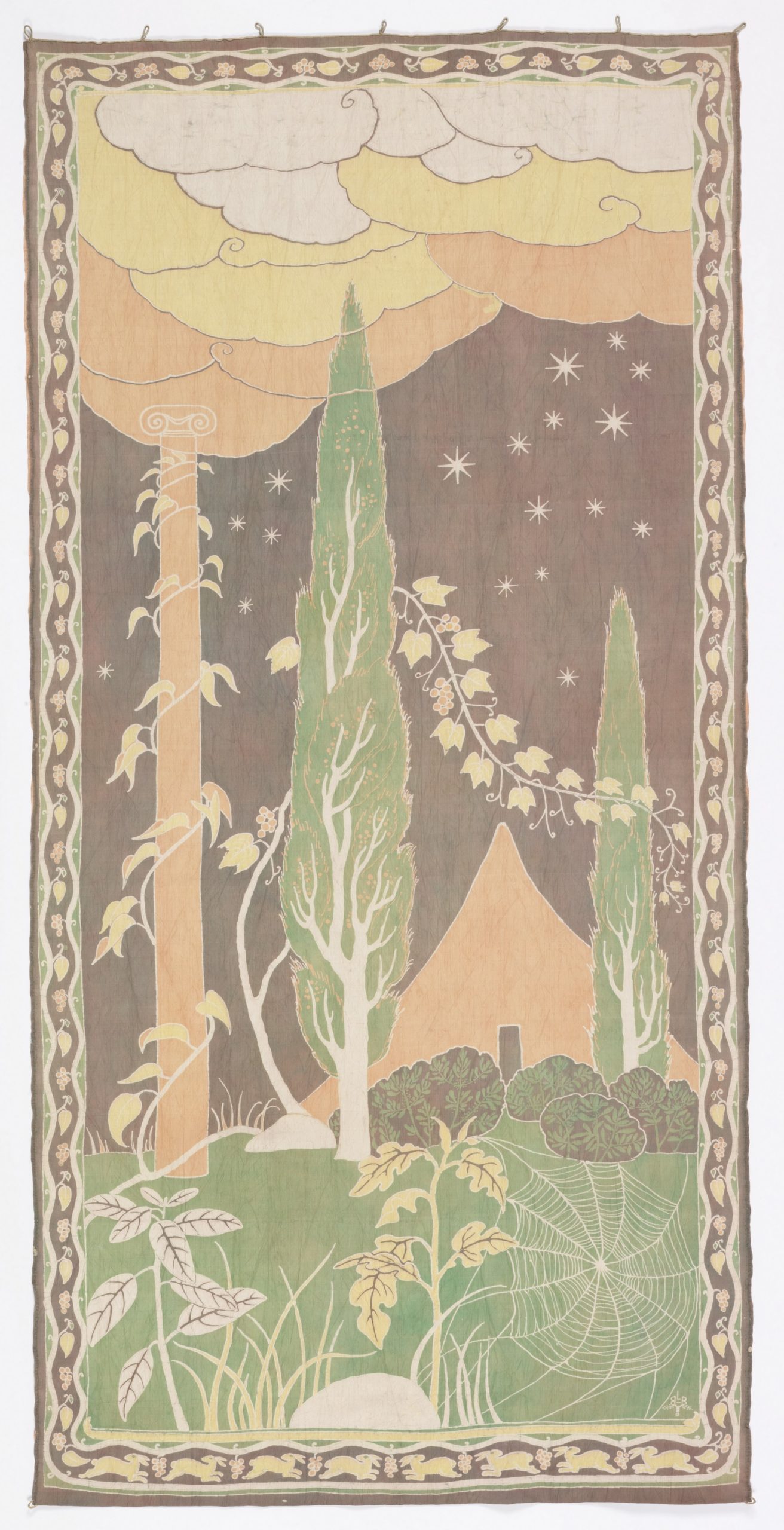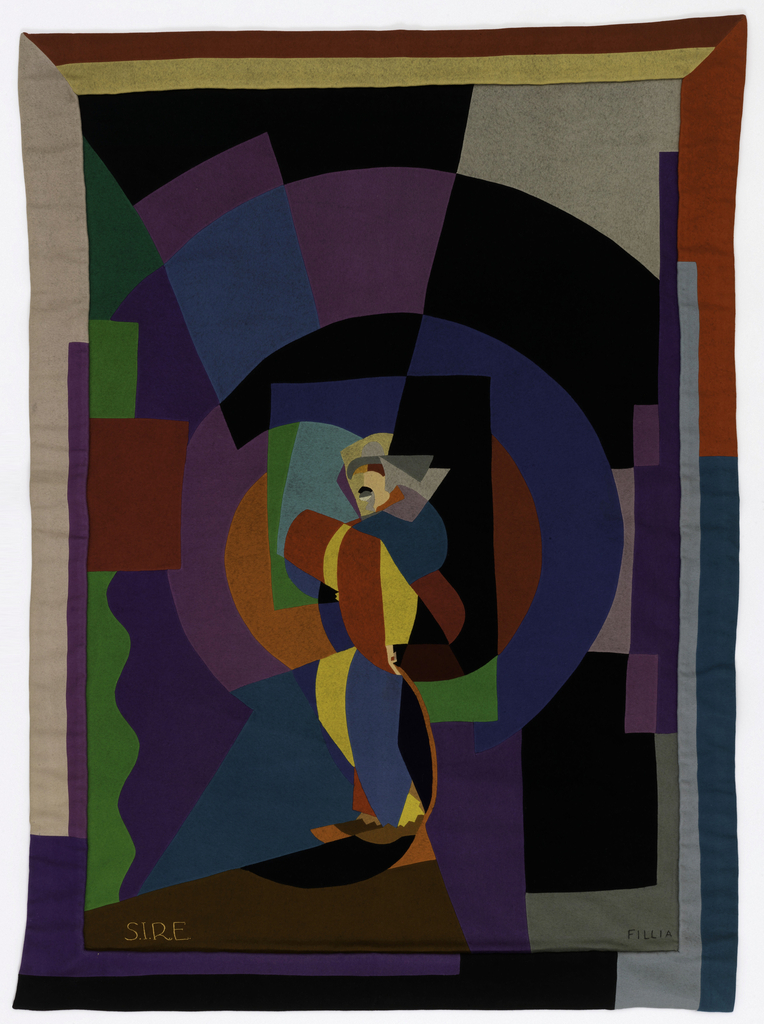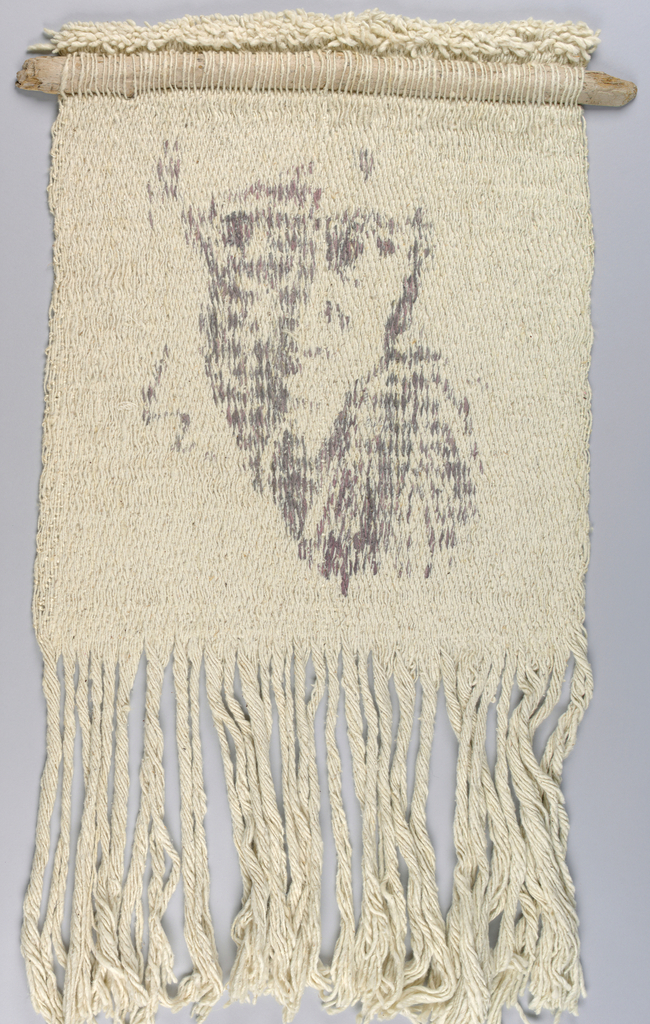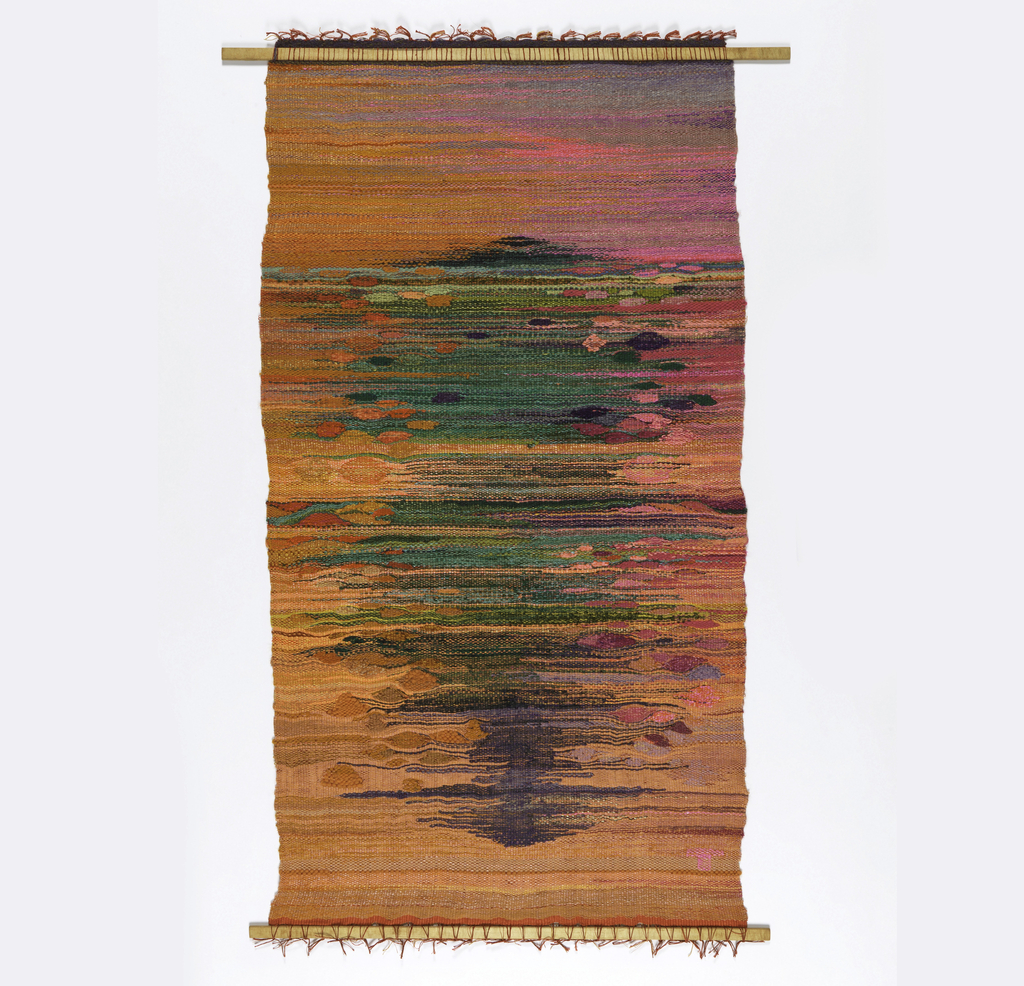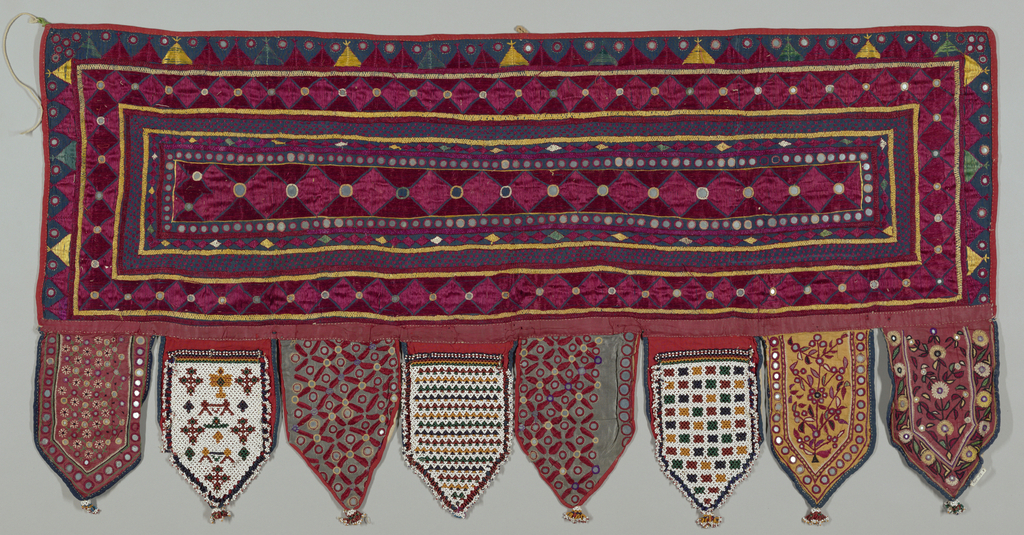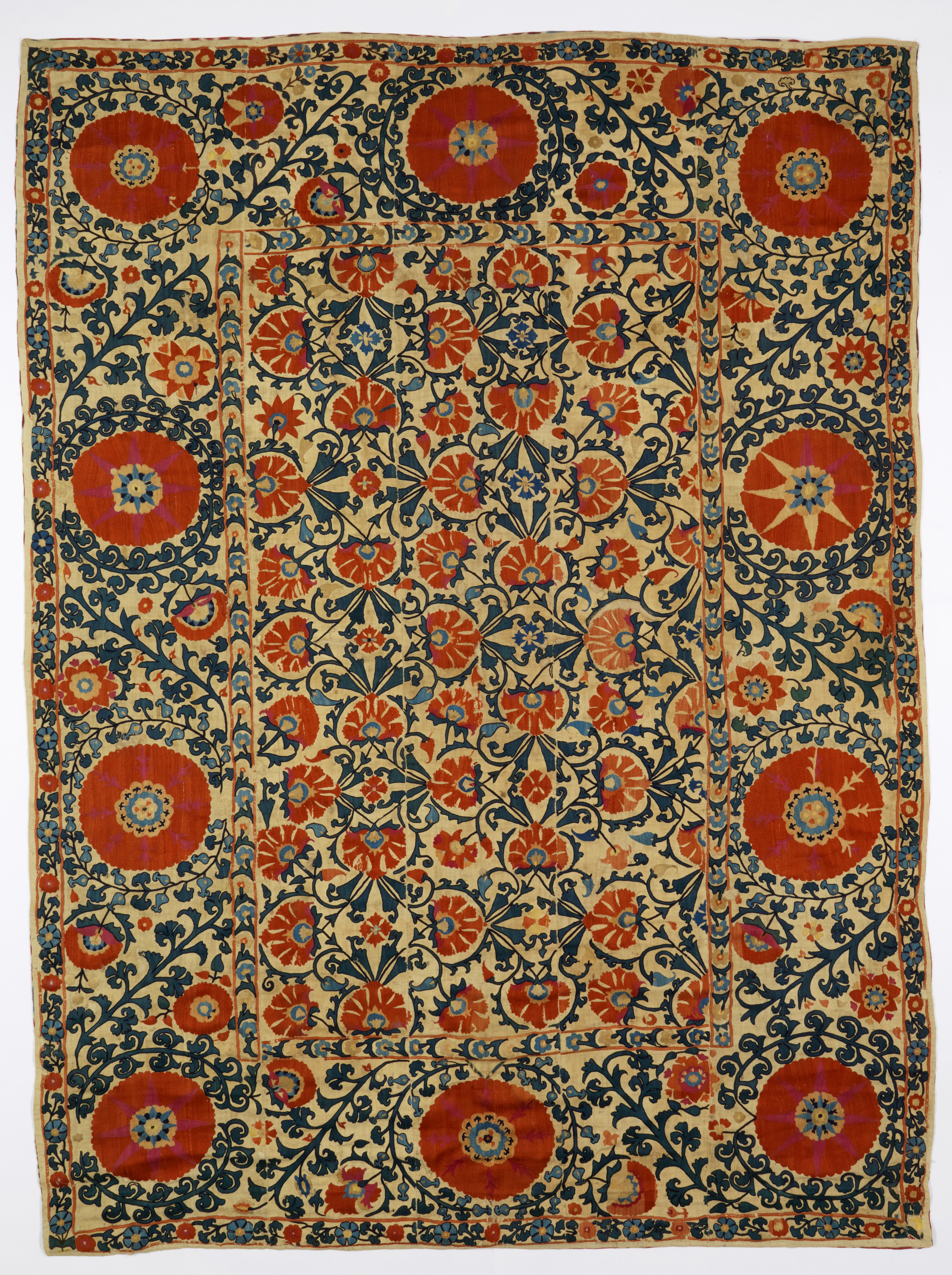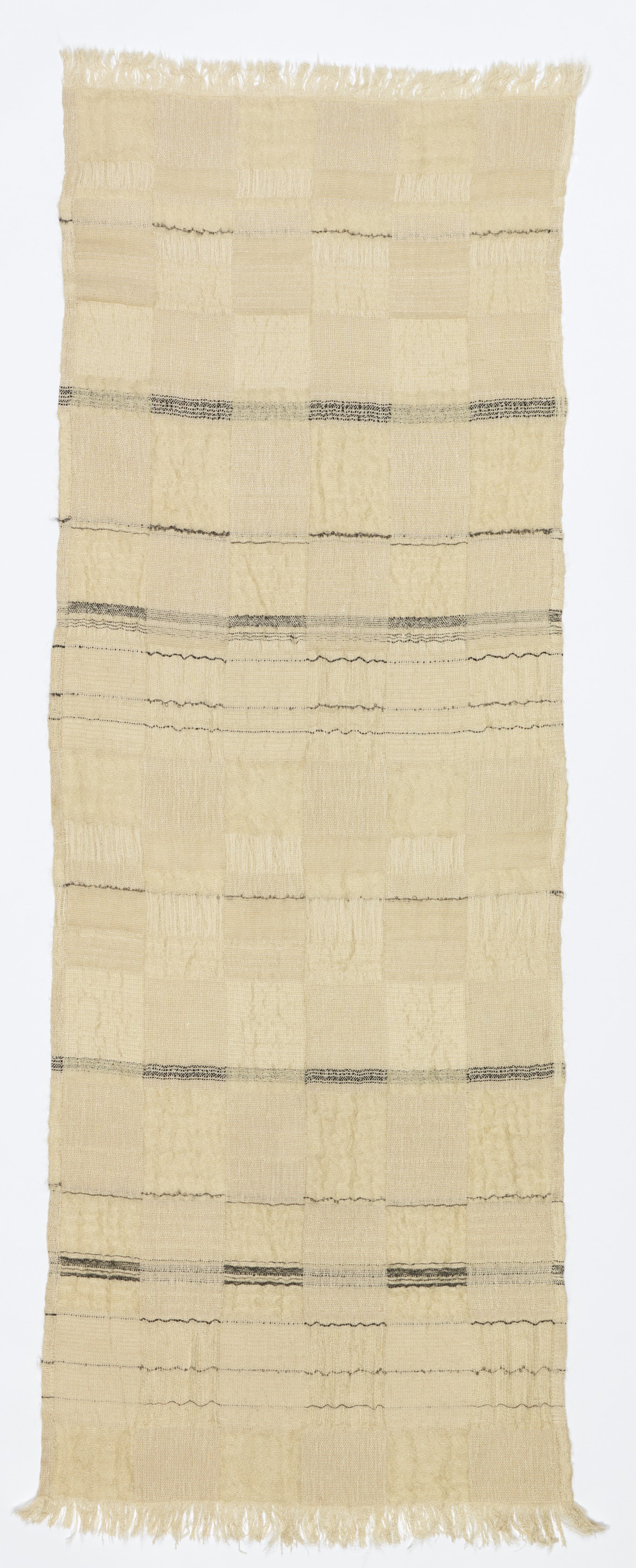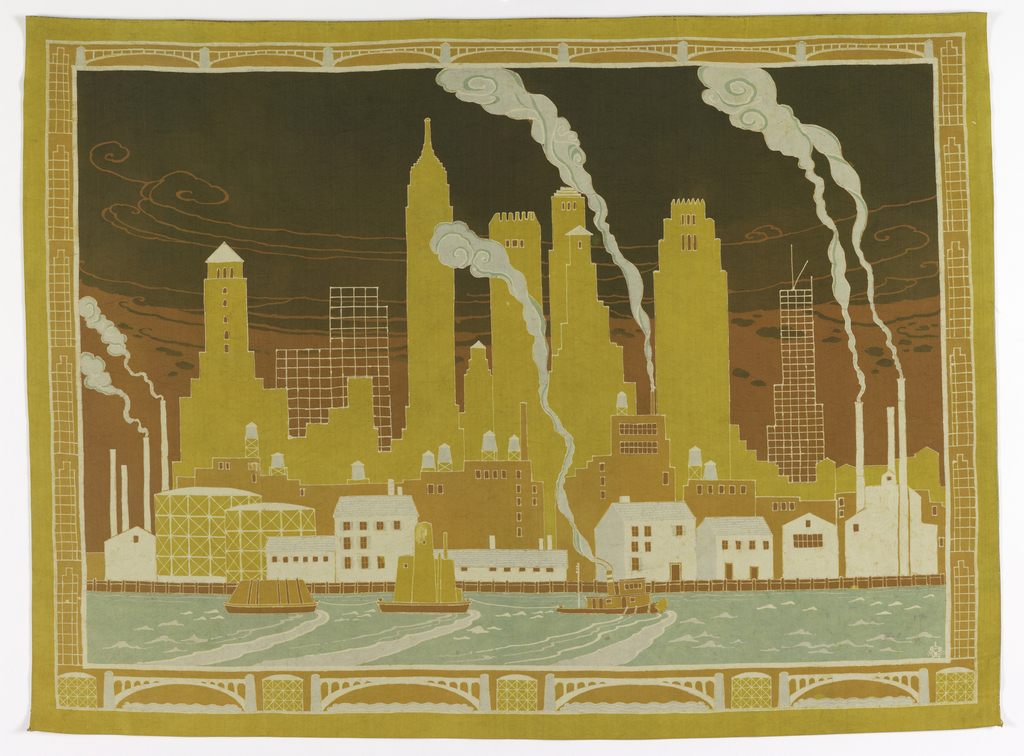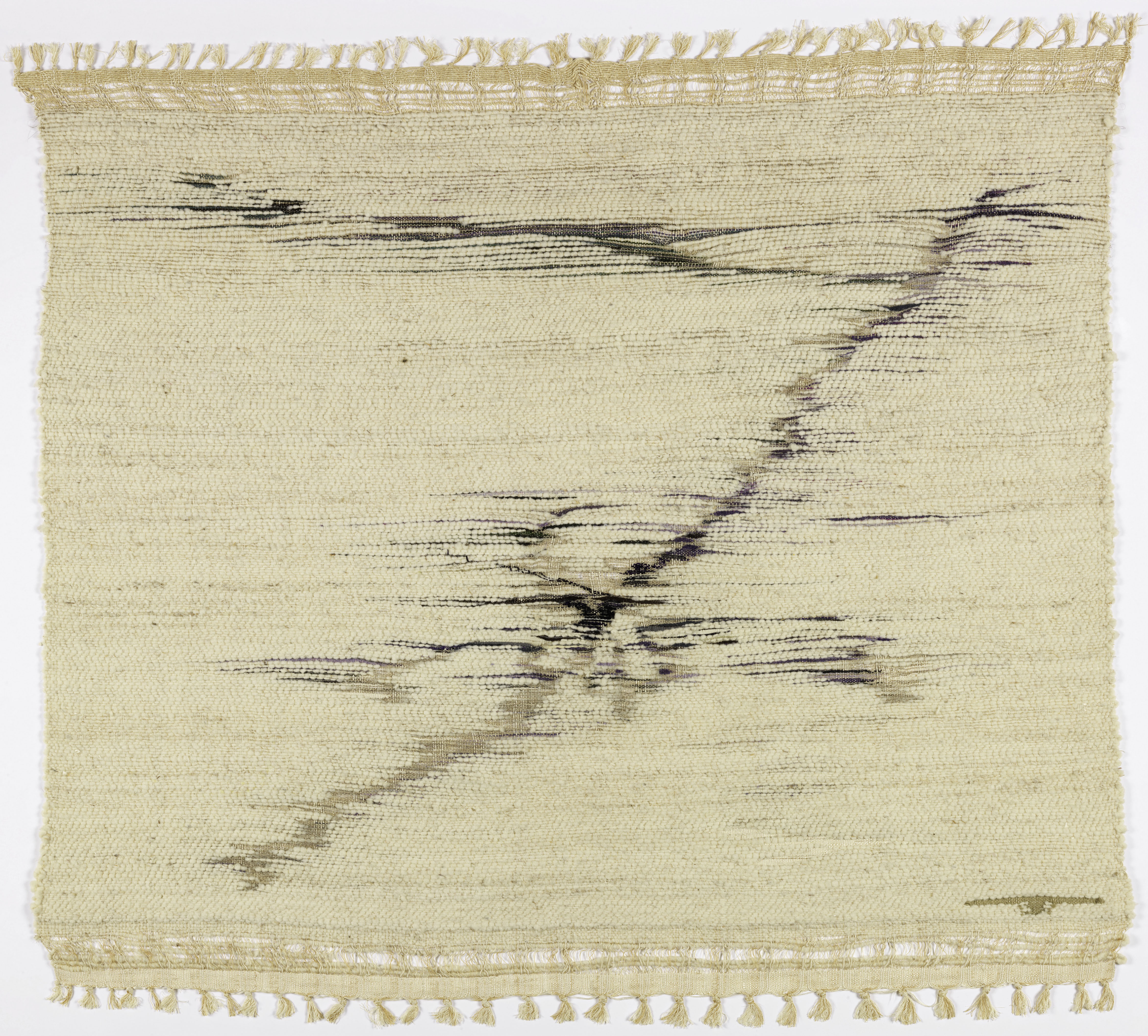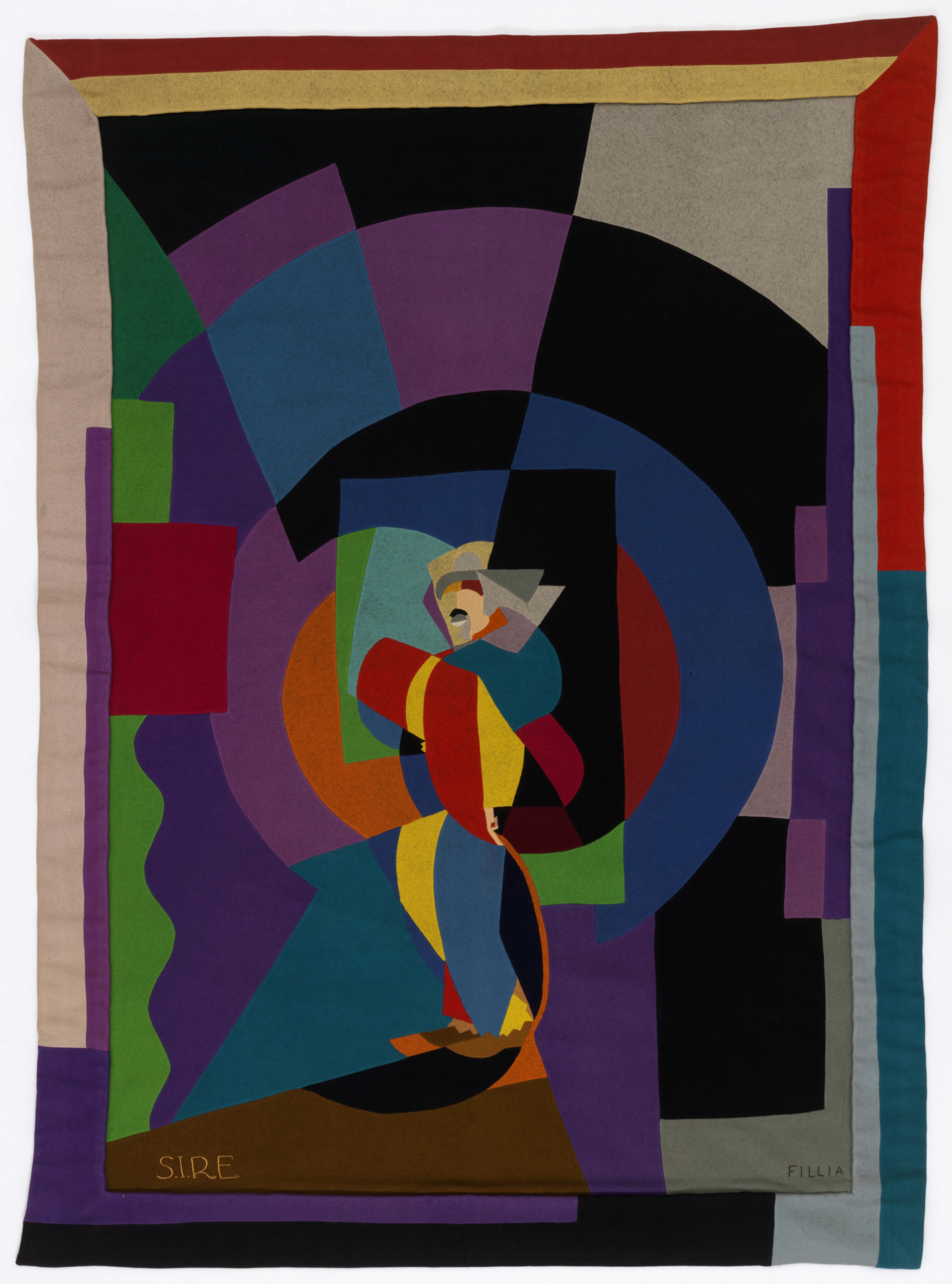Designers can find inspiration from varying forms of creative expression. Looking at the batik murals of the American artist and designer Lydia Bush-Brown (1887–1984), her sources seemed clear. Sketches capturing scenes from her travel in the 1920s to Syria and Italy can be found repeatedly in her work. Murals featuring Syrian villages on terraced hills,...
This object was featured in Object of the Day on Feb. 10, 2015, and has been recently updated with new cataloging information. Fillìa was the adopted name of Italian Futurist artist Luigi Colombo (1904–1936). Fillìa’s association with the Futurists began with the second generation that rose to prominence during the 1920s. This next wave of...
In celebration of Women’s History Month, March Object of the Day posts highlight women designers in the collection. Trude Guermonprez began experimenting with what she called “textile graphics” around 1970; she described this evolution in her work as moving toward: “More [of] an awareness of our ties with the universe…I sense a quieting of passions...
Author: Kathleen Magnan September is New York Textile Month! In celebration, members of the Textile Society of America will author Object of the Day for the month. A non-profit professional organization of scholars, educators, and artists in the field of textiles, TSA provides an international forum for the exchange and dissemination of information about textiles...
The toran is a frieze hanging named after a sacred gateway in Hindu, Jain, and Buddhist architecture. In the Gujarati communities of western India, a toran is hung above the doorway to the main room of the house as a sign of welcoming. This particular toran appears to be in the Kathipa style, recognizable by...
Suzani, meaning “of needle” in Persian, are large-scale embroideries central to Central Asian domestic culture. Young girls learned to sew at an early age, often beginning to work on textiles intended for their own marriage dowries. Suzanis were considered the most important textiles in a dowry. Indicators of skill and family wealth, they were status...
Trude Guermonprez was a much-admired weaver and professor of textile arts at California College of Art. She was trained at the School of Fine and Applied Arts in Halle, Germany, sometimes called the “little Bauhaus,” as many of its faculty had studied or taught there. After World War II, she made her way to California...
Batik, an ancient craft often associated with Indonesia, became popular in United States in the 1910s and 20s, with artists such as Arthur Crisp, Pieter Mijer, and Lydia Bush-Brown attracting national attention. These artists worked in the traditional manner, painting paraffin and beeswax on their cloth to create a resist, but expanded the traditional design...
With a deeply personal connection to weaving, Lenore Tawney’s craft was not an exercise in patience, but in devotion. Some of her works have even been called “altars of meditation” for their quiet spirituality. “Spring Thaw” is a fine example of the delicate and ethereal quality of her work. The background is creamy white, with...
Fillìa was the adopted name of Italian Futurist artist Luigi Colombo (1904–1936). Fillìa’s association with the Futurists began with the second generation that rose to prominence during the 1920s. This next wave of artists gave the movement a much needed infusion of avant garde spirit after the death or defection of several Futurist founders. Their...
